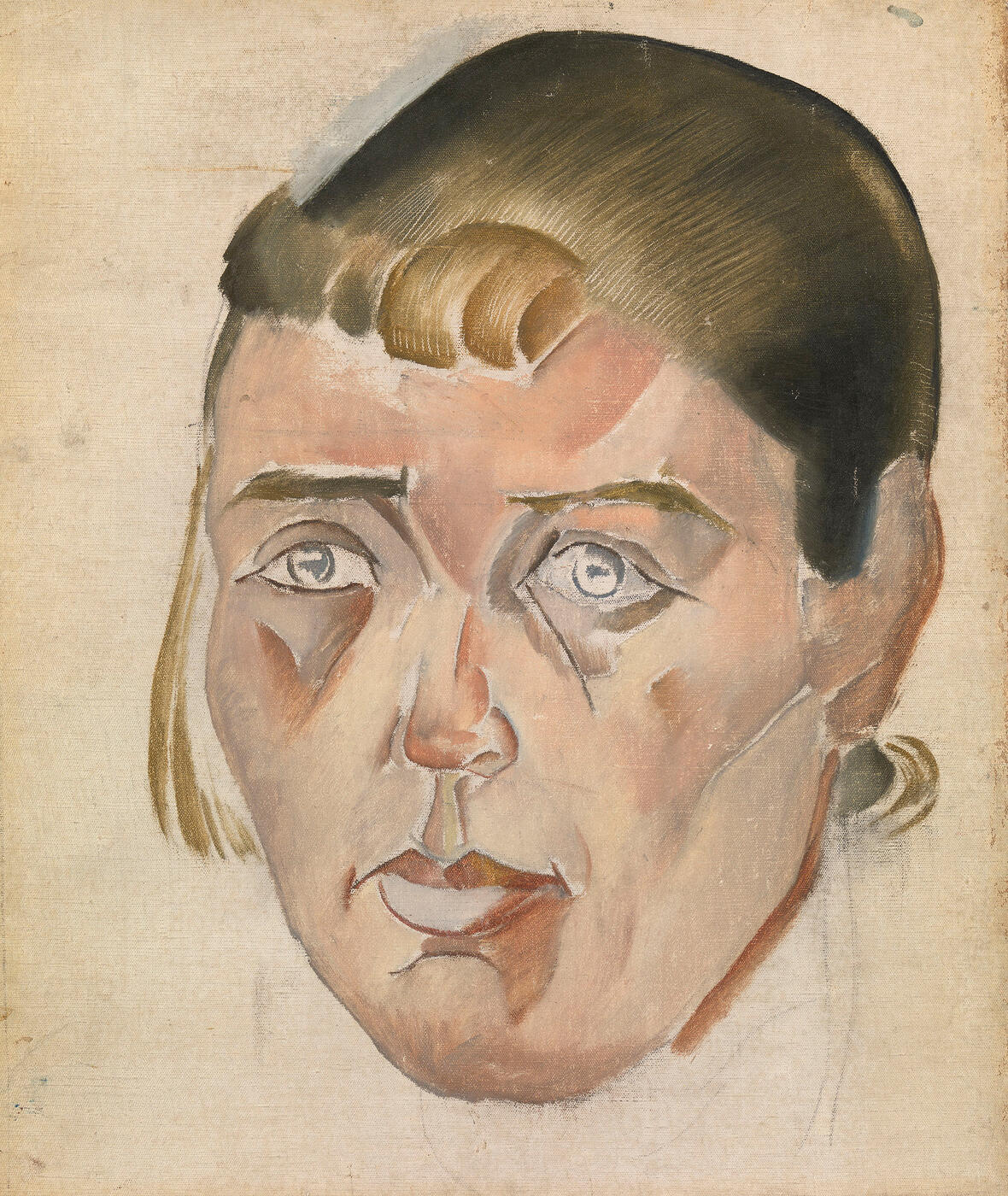30 November 2016 Russian Art Auctions
30 November 2016

* 17. DEINEKA, ALEKSANDR (1899-1969)
Portrait of Paula Freiberg
Oil on canvas, 41.5 by 49.5 cm.
80,000–120,000 GBP
Provenance: A gift from the artist to the sitter, Moscow, c. 1922–1931.
Thence by descent.
Acquired from the above by the present owner in 1998.
Private collection, Switzerland.
Authenticity of the work has been confirmed by the expert T. Zelyukina.
The portrait of the artist Paula Freiberg (1890–1938), executed in a free and spontaneous manner, is among the earliest and rarest “expressionistic” works by Aleksandr Deineka.
Deineka and his model were classmates at the graphic section at the Art and Technical School (VKhUTEMAS) in Moscow in the early 1920s. Their mutual friend Ekaterina Zernovaya recalls that Freiberg was “a Latvian, a party worker, who had been smuggling weapons across the border when she was just fourteen.” By the time she entered the Art School she already had had a turbulent and romantic biography of a professional revolutionary, including exile in Siberia, escape to the UK and then the USA, return to Russia in April 1917 and intensive political work alongside her husband David Beika, a member of the Communist Party Central Committee in the Latvian Soviet Socialist Republic.
Another of Deineka’s comrades of those years, the artist Andrei Goncharov, remembers meeting Deineka “not only in class, but also at the home of Paula Freiberg, another Faculty student, an older woman, intelligent and very nice, but without any talent. Her relationship with Deineka was very close, and it seemed to me that she reined him in, and, in a maternal sort of way, offered him guidance in art and life.”
From 1925, Freiberg started her own art career as a book illustrator, and then as a “proletarian artist”, which no doubt made them closer professionally. In 1928, both artists joined the October Union, which was geared towards proletarian art.
In the 1920s and 1930s, Freiberg sat for Deineka several times, including his famous portrait Girl Sitting on a Chair (1924) and other well-known canvasses, such as Ball Game (1932) and Building New Factories (1926), both now in the collection of the State Tretyakov Gallery.
The austere angle and the straightforward composition, which were the artist’s trademarks at this time, are evident in the portrait offered for auction. Despite the painterly technique, we cannot fail to notice the “graphic interpretation”, which defined young Deineka’s style. It is apparent in the emphasised delineation of the contours; the clear separation of colours; the contrast between the volume of the model’s head and the background; the stylised density of space; and, finally, in the facial architecture, resembling a technical drawing. The artist creates a modern and dynamic portrait of his model using broad brush strokes on a light, unpainted canvas, with a minimum of tone variations. At the same time, Deineka’s brush strokes are voluminous, so that the borders of the colour spots lend volume and weight to the form, conveying the movement of the face and its lively expression. The separate colour planes do not merge or fade into one another, but clearly relate to one another spatially and generate a striking, voluminous and recognisable image of a female artist of the 1920s. The deliberately angular, barbed contours of this iconic, vigorously painted portrait bear the unmistakable hallmark of the master, with his broad, temperamental style.
This is most probably the sole remaining portrait of Paula Freiberg by Deineka, which remains in private ownership, and one with a troubled history. Paula Freiberg was arrested soon after her husband in 1938, sentenced to forced labour and died in transit to the camps. Thereafter Deineka, for obvious reasons, avoided bringing up this dangerous liaison, and the present work probably only survived because he left it unsigned and did not inscribe it with the model’s name (as he did with another portrait of Freiberg, which is now in the collection of the State Tretyakov Gallery).
Notes on symbols:
* Indicates 5% Import Duty Charge applies.
Ω Indicates 20% Import Duty Charge applies.
§ Indicates Artist's Resale Right applies.
† Indicates Standard VAT scheme applies, and the rate of 20% VAT will be charged on both hammer price and premium.